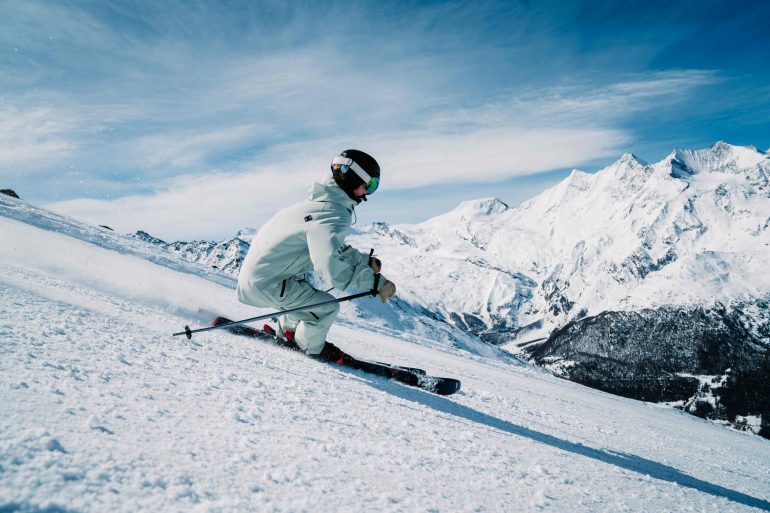Of wooden boards and pioneers: The history of winter sports in the Saas Valley
Skiing is more than just a sport – it’s a passion that unites generations, a blend of technology and nature, and a tradition that’s deeply embedded in the history of Alpine regions. The Saas Valley, surrounded by its four-thousand-metre peaks, is a place where you can experience the magic of winter sports.
How it all began
The history of skiing in the Saas Valley starts with an incredible figure: Pastor Johann Josef Imseng. Imseng was born in Saas-Fee in 1806. He was a spiritual leader and also a pioneer of winter sports. In a time when skiing was still unheard of, Imseng saw the potential of this new form of transport.
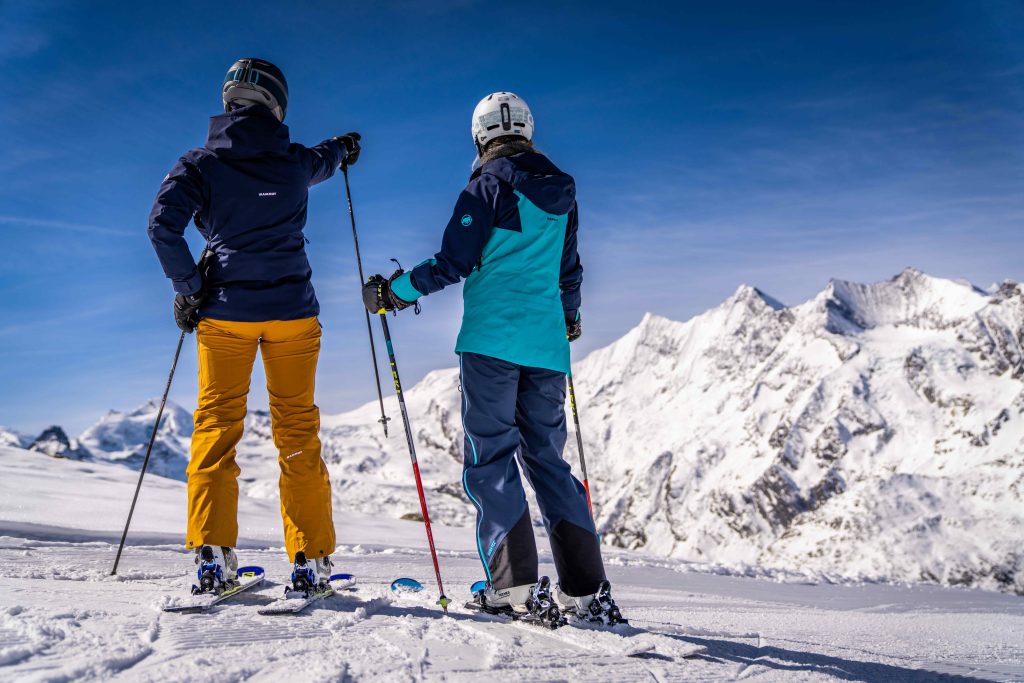
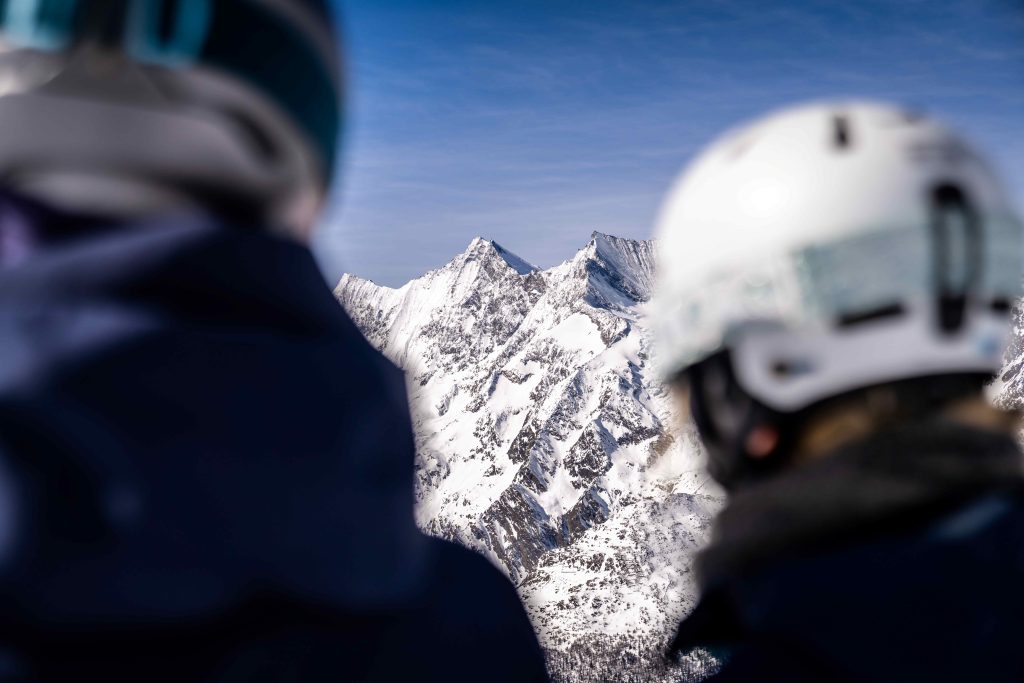
During the winter of 1849, when the postal route from Saas-Fee to Saas-Grund was blocked by snow, Imseng came up with the idea of using wooden planks to go and administer the Last Sacrament to a dying man. He was inspired by reports from Scandinavia and set out on skis he’d made himself from wooden planks, becoming presumably Switzerland’s first skier. He was the first to introduce skiing to the Saas Valley. His pioneering work wasn’t just a rescue operation; it also marked the start of a new era for the region.
The development of a winter sports paradise
The first skiers to arrive in the Saas Valley found a pristine winter landscape perfect for the new sport. The conditions were ideal, with stunning glaciers, snow-covered slopes and clear winter days. Over the years, the Saas Valley has become a popular destination for skiers from all over the world.
In the 1950s, Saas-Fee experienced a real boom. The first ski lifts and cable cars began to open up the higher slopes, making the area even more attractive to ski in. The construction of the world’s highest funicular, the Metro Alpin (1984), which opened up the glacier region at an altitude of 3,500 metres, was not only a pioneering achievement at the time but also demonstrated the inventive spirit of the people of Saas-Fee when it came to challenging construction projects: To get the equipment and components up to the Felskinn station at 3,000 m a.s.l., they had to be dismantled and transported up, partly by helicopter and partly by hanging from the Felskinn cable car.
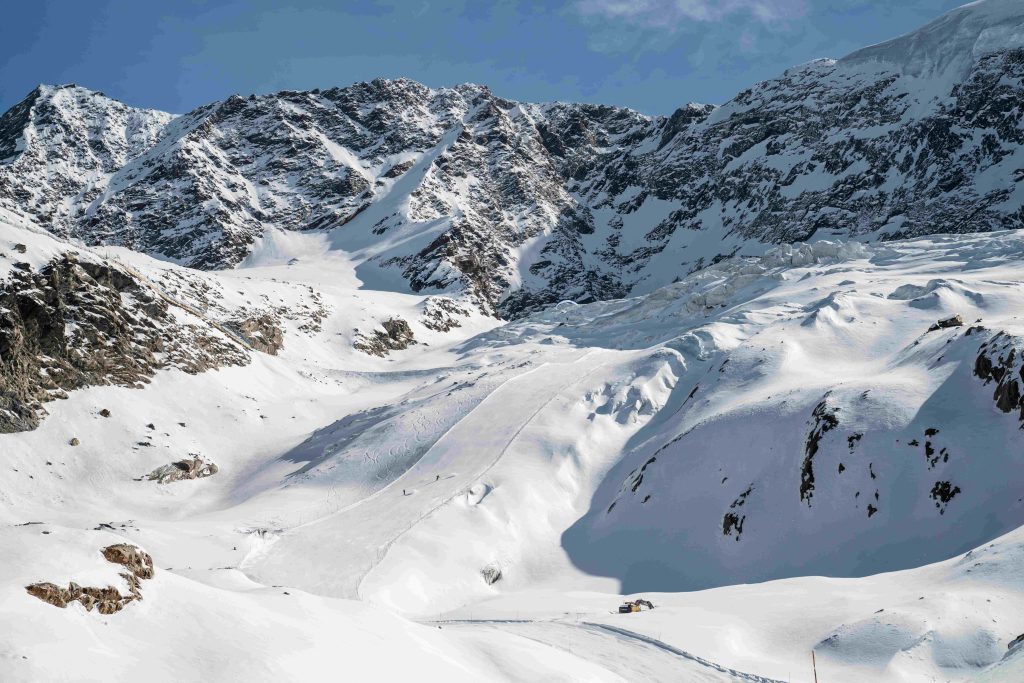
Today, the holiday region of Saas-Fee/Saastal has not only established itself as a winter sports paradise but has also commited to sustainable and environmentally friendly tourism. The focus on renewable energy and environmentally friendly technologies is in line with the protection of the region’s unique natural environment. State-of-the-art lifts and snowmaking equipment ensure optimal conditions and minimal environmental impact.
The magic of skiing
But what is it that makes skiing so fascinating? It’s the perfect combination of physical activity, enjoying the great outdoors and that unbeatable feeling of freedom. The smooth glide over the glistening blanket of snow, the exhilarating speed and the flowing, balanced movements create a feeling of lightness and almost weightless flight. Skiing is more than just a sport; it’s an art form that challenges the whole body.
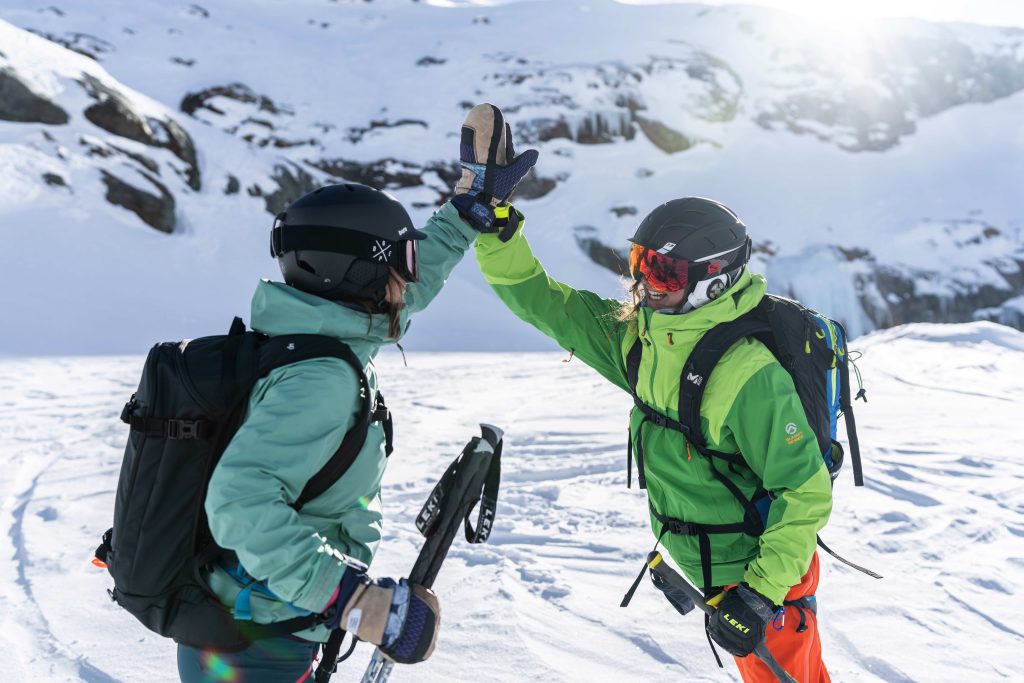
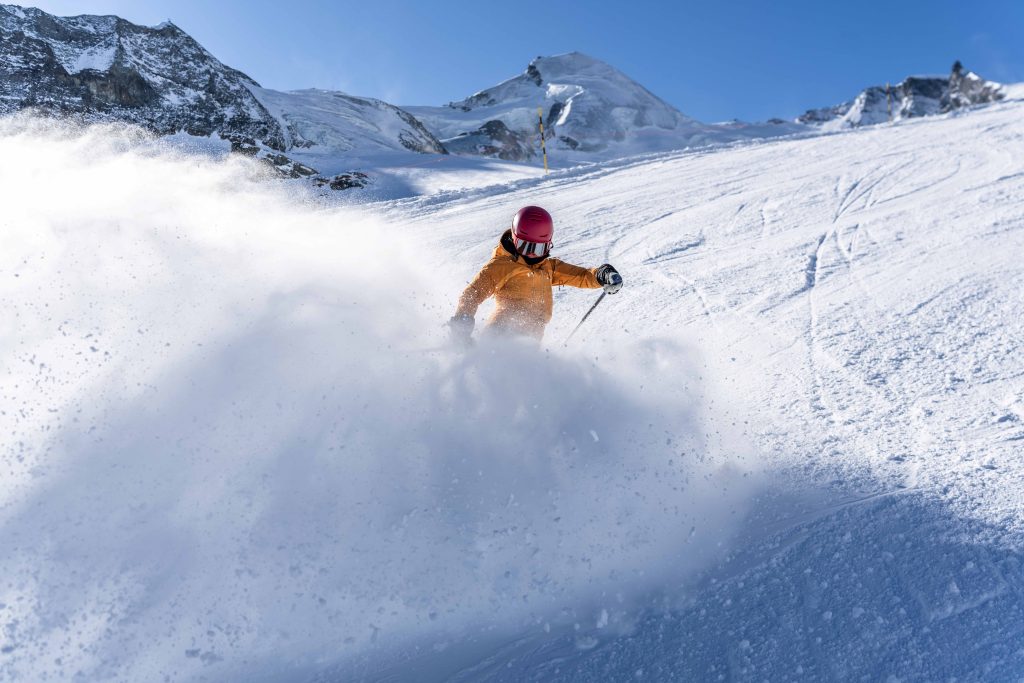
The Saas-Fee/Saastal area is famous for its combination of lightness and a dash of adrenaline. With over 150 kilometres of slopes, we offer a great way to have fun in stunning natural surroundings where it’s easy to forget your worries as you race down the next descent.
You can find this article and other interesting stories in our destination magazine 4545.

